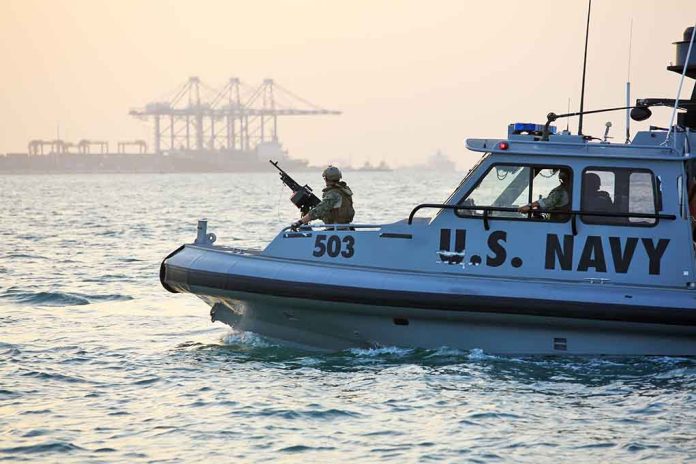
House Armed Services Committee challenges Navy’s “Great Reset” strategy, emphasizing fleet size and readiness concerns in new defense bill.
At a Glance
- Committee’s fiscal 2025 NDAA addresses concerns over Navy’s aging cruisers and fleet size
- Bill limits retirement of Ticonderoga-class cruisers and calls for additional submarine purchase
- NDAA emphasizes development of rearm-at-sea capability and new ship designs
- Intellectual readiness highlighted as crucial for Navy’s future effectiveness
House Committee Confronts Navy’s “Great Reset” Plans
The House Armed Services Committee has taken a stand against the U.S. Navy’s “Great Reset” strategy in its fiscal 2025 National Defense Authorization Act (NDAA). The committee’s actions reflect growing concerns over the potential impact of fleet reductions on national security and operational readiness. By addressing issues ranging from aging cruisers to next-generation technologies, the NDAA seeks to maintain a robust and capable naval force.
One of the most significant aspects of the NDAA is its approach to fleet size. The committee has taken steps to prevent the retirement of certain vessels, recognizing the importance of maintaining a strong naval presence. According to the bill:
“The committee’s version of the NDAA ‘would prohibit the retirement of the Guided Missile Cruisers USS Shiloh (CG 67) and USS Lake Erie (CG 70).'”
This move directly challenges the Navy’s plans to downsize its fleet, highlighting the ongoing tension between modernization efforts and maintaining current force levels.
Balancing Readiness and Future Capabilities
The NDAA also addresses the crucial balance between current readiness and future capabilities. The committee calls for the Navy to purchase a second Virginia-class submarine in FY25, diverging from the Navy’s request for only one per year. This decision underscores the committee’s commitment to bolstering the submarine fleet, a critical component of naval power projection.
Additionally, the bill emphasizes the need for consistency in long-term planning:
“This section would require the Navy to be consistent in the first 10-year planning window of the annual 30-year Shipbuilding Report to Congress.”
This requirement aims to ensure a more stable and predictable shipbuilding strategy, providing clarity for both the Navy and the industrial base.
Addressing Future Threats and Technological Advancements
The committee expresses significant concerns about the Navy’s ability to meet evolving threats, particularly in relation to its destroyer fleet. The NDAA states:
“The committee remains concerned about the ability of the Navy’s destroyers to meet future threats, especially as missile technology continues to advance.”
To address these concerns, the bill calls for reviews and status updates on various destroyer programs, including the DDG(X), Flight III Arleigh Burke, and Zumwalt class. It also emphasizes the development of advanced propulsion systems and a rearm-at-sea capability, demonstrating a focus on enhancing the Navy’s technological edge.
The Importance of Intellectual Readiness
Beyond hardware and fleet size, the NDAA indirectly addresses the critical role of intellectual readiness in maintaining naval superiority. Historical examples, such as the Pearl Harbor attack, underscore the importance of mental agility and adaptability in facing unforeseen challenges.
The concept of intellectual readiness encompasses cognitive and psychological preparedness, crucial for sustaining performance in complex situations. As the Navy faces rapidly changing operational landscapes with AI, autonomous systems, and modern software, fostering a culture of innovation and critical thinking becomes paramount.
In conclusion, the House Armed Services Committee’s approach to the fiscal 2025 NDAA reflects a multifaceted strategy to address the challenges posed by the Navy’s “Great Reset” plans. By emphasizing fleet size, technological advancement, and intellectual readiness, the committee aims to ensure that the U.S. Navy remains a formidable force capable of meeting both current and future threats to national security.





